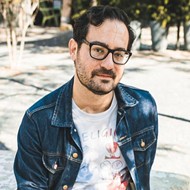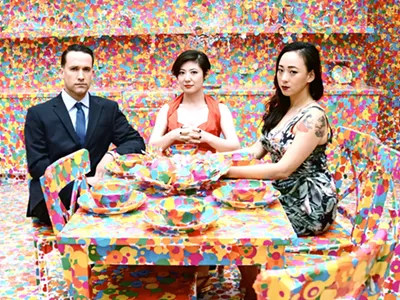Starting on Friday, Hamtramck's Bank Suey will host The Wall Speaks – Voices of the Unheard, a travelling exhibition that aims to bring humanity to the statistic of Polish lives lost during World War II. We caught up exhibition creator Wojtek Sawa and learned how the exhibition is about more than just the Polish genocide, and why Hamtramck is the perfect venue for it.
Metro Times: What were the origins of the exhibition?
Wojtek Sawa: I was approached a few years ago by some friends who I hadn't seen in a very long time, whose dad actually was in the Polish Underground State during the war, and his daughter asked me if I would make a film about people who fought in the Underground. I'm a film director by training, but I wasn't terribly interested in the project because talking heads is not something that I like in film very much. But I was moved by these people who approached me, and I hadn't seen them in a long time. I was just thinking about it and thinking about it. And then I decided to make it into a participatory installation. That's when it kind of took off for me and I was able to be enthusiastic about making it.
MT: Why was that?
Sawa: My initial difficulties with it were that it was directed to a Polish-American audience, and it was kind of strictly about people in the Underground. I had sensed that if we're going to tell the story, it's much better to direct it toward mainstream America rather than Polish-Americans who know it already. A big breakthrough for me came when I was just trying to figure out what is it about this story that would make it pertinent to a wider audience. I realized that the story I want to tell is in the broader sense is about people who had suffered through trauma and abuse, and they're not able to share that story with the outside world because the outside world isn't interested, or the powers that be are more interested in keeping that story out of the mainstream.
MT: What can you tell us about the installation?
Sawa: The basic element of it that it is built around is 28 large-scale, human-scale photographs that show these people that I had spoken to as they looked at the time of the war — so as kids and teenagers. The photographs are printed on mesh, a very delicate kind of material, and they hang on fish lines, so they're very kind of ethereal. Next to each photograph there's a large story that's been printed on delicate cotton fabric. Essentially, the viewer has to pick it up and take it in hand to be able to read it, and that serves several functions. I want the viewer to come in direct, tactile contact with the content of the exhibit. It also conveys this aspect of humanity that we're very fragile. The content of their life story, which is on this piece of cloth, is very powerful, because it speaks of how we can resist these attempts to make us into sub humans and taking our dignity away. These people went through all this and came out the other side still capable of love, of trust, and finding fulfillment in their work. In that sense it's like a gift from them to us, and speaks of the strength of the human spirit.
Under each photograph there's a brick. On the top, they're inscribed with information about actions undertaken by enemies to destroy the spirit of the Polish people, to try to turn these people into a race of subhumans. I ask people to pick up a brick, read it, and then walk along the exhibition with the brick in hand and feel the weight of that burden.
As they walk through a forest of figures, they get to a wall where there's a steel grid. The grid has 100 openings, and they are the size of the brick. So I ask the viewer to turn the brick, and then on the bottom side there's a blank sheet and I ask them to write on it and share their own experiences of being rendered voiceless or being treated as less than human. There were girls who wrote about being raped, battered women, gay and lesbians who wrote about being ostracized ... all kinds of people write on this wall, and this wall became this safe place for people who wanted to share their experiences. And to me, that is in many ways the most important thing about what the exhibition sets out to do, and that is to create a bridge between the past and present. I believe history becomes relevant when it finds its mirror in the present.
MT: Why Hamtramck?
Sawa: I feel Hamtramck is just this miraculous circumstance in which you have all these different ethnic and religious groups together in this very small, dense place, and they're facing the challenges and opportunities of cultural diversity. I think that is an amazing and wonderful opportunity to create bridges, because some of these communities are kind of molecular. They keep to themselves, and while they're not fighting each other, often they're not going through common experiences together. So I'm hopeful that this exhibition that will create a space for them to come together.
The Wall Speaks – Voices of the Unheard opens at 7 p.m. on Friday, March 31 at Bank Suey; 10345 Joseph Campau Ave., Hamtramck; banksuey.com; runs through May 29.







